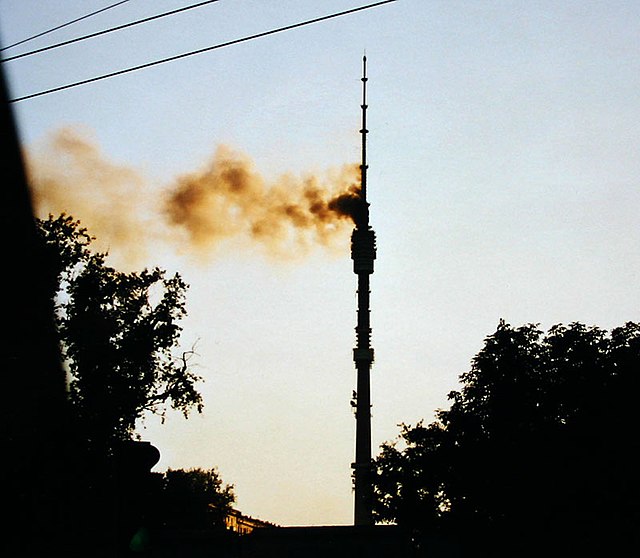A conflagration is a large fire. Conflagrations often damage human life, animal life, health, and/or property. A conflagration can begin accidentally or be intentionally created (arson). A very large fire can produce a firestorm, in which the central column of rising heated air induces strong inward winds, which supply oxygen to the fire. Conflagrations can cause casualties including deaths or injuries from burns, trauma due to collapse of structures and attempts to escape, and smoke inhalation.
The August Complex fire in 2020, the largest fire in California's history
Burned trees in front the Montagna di Vernà, Peloritani mountains, Sicily
Ostankino Tower fire
A fire in New Orleans after Hurricane Katrina
Fire is the rapid oxidation of a material in the exothermic chemical process of combustion, releasing heat, light, and various reaction products.
At a certain point in the combustion reaction, called the ignition point, flames are produced. The flame is the visible portion of the fire. Flames consist primarily of carbon dioxide, water vapor, oxygen and nitrogen. If hot enough, the gases may become ionized to produce plasma. Depending on the substances alight, and any impurities outside, the color of the flame and the fire's intensity will be different.
A burning candle
Bushman starting a fire in Namibia
A coal-fired power station in China
The balanced chemical equation for the combustion of methane, a hydrocarbon








